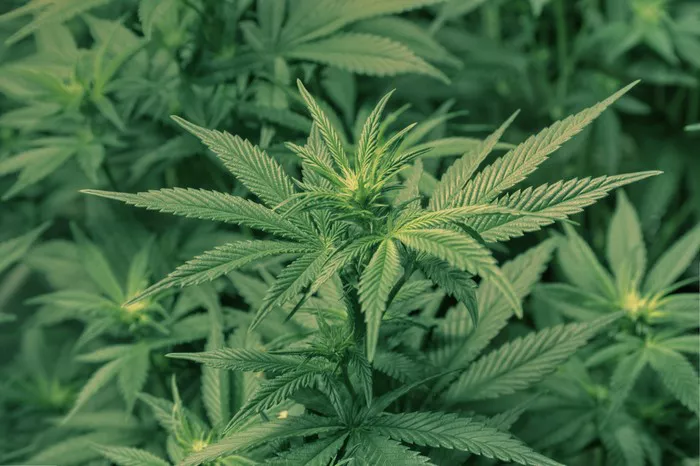Imagine walking into a vibrant garden, only to notice that some of your favorite plants are sporting unsightly yellow leaves. This sight can be both puzzling and disheartening. Yellowing leaves are one of the most common problems that gardeners and plant enthusiasts encounter, and they can signal a range of issues. But what exactly causes this alarming change in color? In this comprehensive article, we will delve into the various reasons why plants get yellow leaves, offering you insights and solutions to restore your greenery to its lush, healthy state.
Understanding the Basics: The Color of Leaves
To appreciate why leaves turn yellow, it’s crucial to understand why they are green in the first place. Leaves contain chlorophyll, the green pigment that plays a vital role in photosynthesis—the process by which plants convert sunlight into energy. Chlorophyll absorbs light most efficiently in the blue and red wavelengths and reflects green light, giving leaves their distinctive color. When chlorophyll breaks down, the green color fades, and other pigments like carotenoids (yellow and orange) become more visible.
Common Causes of Yellowing Leaves
1. Nutrient Deficiencies
One of the most common causes of yellow leaves is nutrient deficiency. Plants require a balanced diet of essential nutrients to thrive. The three primary nutrients are nitrogen, phosphorus, and potassium, but plants also need secondary nutrients like calcium, magnesium, and sulfur, as well as micronutrients such as iron and manganese.
Nitrogen Deficiency
Symptoms: Older leaves turn yellow while the veins remain green.
Cause: Nitrogen is crucial for chlorophyll production and overall plant growth. A lack of nitrogen impairs photosynthesis, leading to yellowing.
Iron Deficiency
Symptoms: Young leaves turn yellow while veins stay green, a condition known as interveinal chlorosis.
Cause: Iron is essential for chlorophyll synthesis. It is less mobile in the plant, so deficiencies often appear in newer leaves.
2. Watering Issues
Both overwatering and underwatering can cause yellow leaves.
Overwatering
Symptoms: Yellow leaves often accompanied by a soggy soil environment.
Cause: Excess water can lead to root rot, depriving the plant of oxygen and causing leaves to yellow.
Underwatering
Symptoms: Dry, yellowing leaves that may become crispy.
Cause: Insufficient water supply limits the plant’s ability to transport nutrients, resulting in yellow leaves.
3. Pest Infestations
Insects and other pests can also cause yellowing.
Spider Mites
Symptoms: Small yellow or white spots on leaves, often with fine webbing.
Cause: Spider mites feed on plant sap, depriving leaves of essential nutrients.
Aphids
Symptoms: Yellowing leaves with a sticky residue or distorted growth.
Cause: Aphids suck sap from plants, leading to weakened foliage and nutrient deficiencies.
4. Disease and Fungal Infections
Diseases and fungi can cause significant damage to plants.
Powdery Mildew
Symptoms: White powdery substance on leaves, which eventually turn yellow.
Cause: This fungal disease thrives in dry, warm conditions and affects chlorophyll production.
Root Rot
Symptoms: Yellowing leaves and stunted growth.
Cause: Often caused by fungi or bacteria in overly wet soil, root rot impairs the plant’s ability to absorb nutrients.
5. Environmental Stress
Plants can react to environmental changes with yellowing leaves.
Temperature Extremes
Symptoms: Leaves may turn yellow and drop prematurely.
Cause: Both extreme heat and cold can stress plants, affecting their ability to function normally.
Sunburn
Symptoms: Yellow or brown spots on leaves, often on the side exposed to direct sunlight.
Cause: Intense sunlight can scorch leaves, leading to discoloration and damage.
see also: What Plants Should I Have in My House?
How to Diagnose and Address Yellow Leaves
Diagnosing the Problem
To address yellowing leaves effectively, proper diagnosis is crucial. Start by examining the pattern of yellowing:
Is it affecting older or newer leaves?This can indicate whether the problem is related to nutrient deficiencies or environmental stress.
Check the soil: Is it too dry or too wet? This can help determine if watering issues are at play.
Inspect for pests and diseases: Look closely for signs of infestation or fungal growth.
Addressing Nutrient Deficiencies
Nitrogen Deficiency: Apply a balanced fertilizer with a higher nitrogen content or organic compost.
Iron Deficiency: Use iron chelate supplements or foliar sprays to address this issue.
Correcting Watering Practices
Overwatering: Improve soil drainage and allow the top inch of soil to dry out between waterings.
Underwatering: Increase watering frequency and ensure the plant receives adequate moisture.
Managing Pests
Spider Mites: Use insecticidal soap or neem oil to treat infestations.
Aphids: Introduce beneficial insects like ladybugs or use insecticidal soap.
Treating Diseases
Powdery Mildew: Apply fungicides and improve air circulation around the plant.
Root Rot: Remove affected roots, improve drainage, and avoid overwatering.
Mitigating Environmental Stress
Temperature Extremes: Move plants to a more stable environment or use shade cloths to protect them from harsh conditions.
Sunburn: Provide filtered light or relocate plants to a less intense light source.
Preventing Yellow Leaves
Regular Maintenance
Fertilization: Use balanced fertilizers regularly to ensure plants receive necessary nutrients.
Watering Schedule: Develop a consistent watering routine based on the plant’s needs and environmental conditions.
Monitoring Plant Health
Inspect Leaves: Regularly check for signs of yellowing, pests, or diseases.
Adjust Conditions: Make necessary adjustments to light, temperature, and humidity levels.
Choosing the Right Plants
Select Varieties: Choose plants that are well-suited to your local climate and soil conditions.
Conclusion
Yellowing leaves can be a troubling sight for any plant lover, but understanding the underlying causes can lead to effective solutions. Whether it’s due to nutrient deficiencies, watering issues, pests, diseases, or environmental stress, identifying the problem is the first step toward a healthier garden. By applying the right remedies and adopting preventive measures, you can ensure your plants remain lush and vibrant.
In summary, while yellow leaves might seem like a simple issue, they often indicate deeper problems that require attention. With careful observation and a proactive approach, you can maintain the health of your plants and enjoy a thriving garden. So next time you see those telltale yellow hues, remember that it’s not just a sign of trouble—it’s an opportunity to learn and improve your gardening skills.


